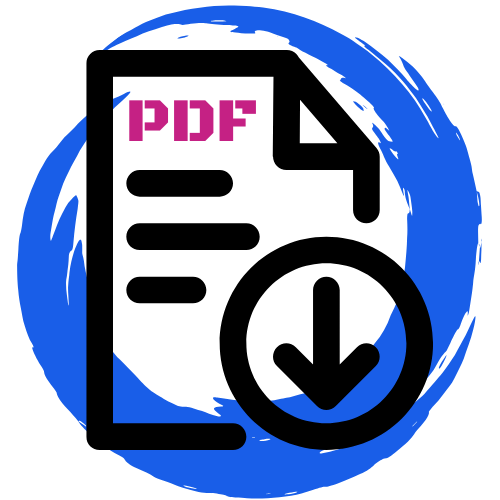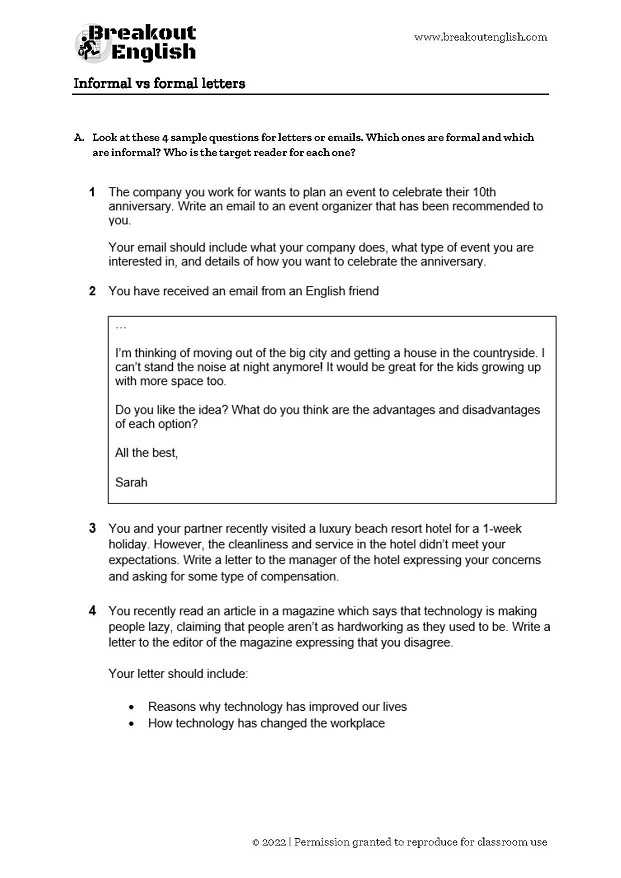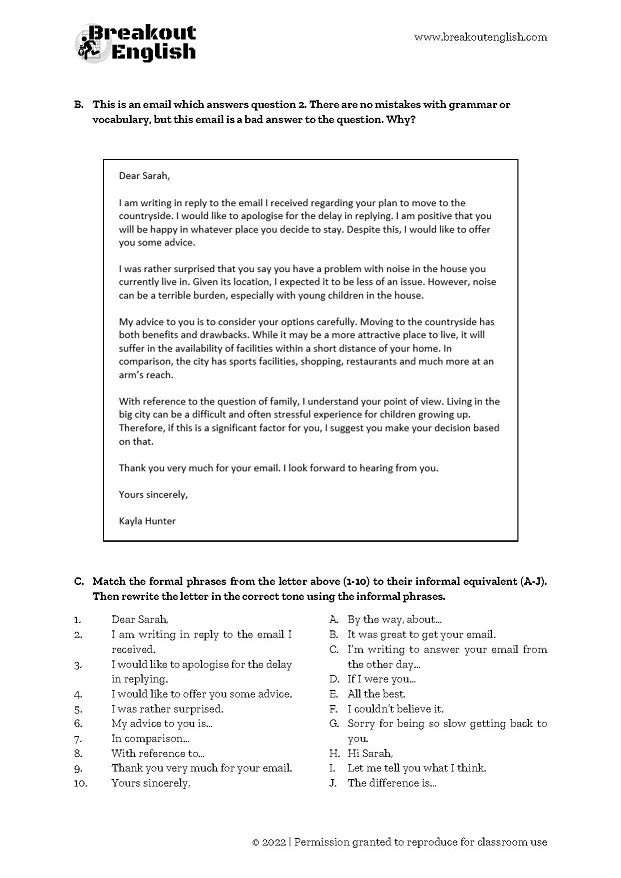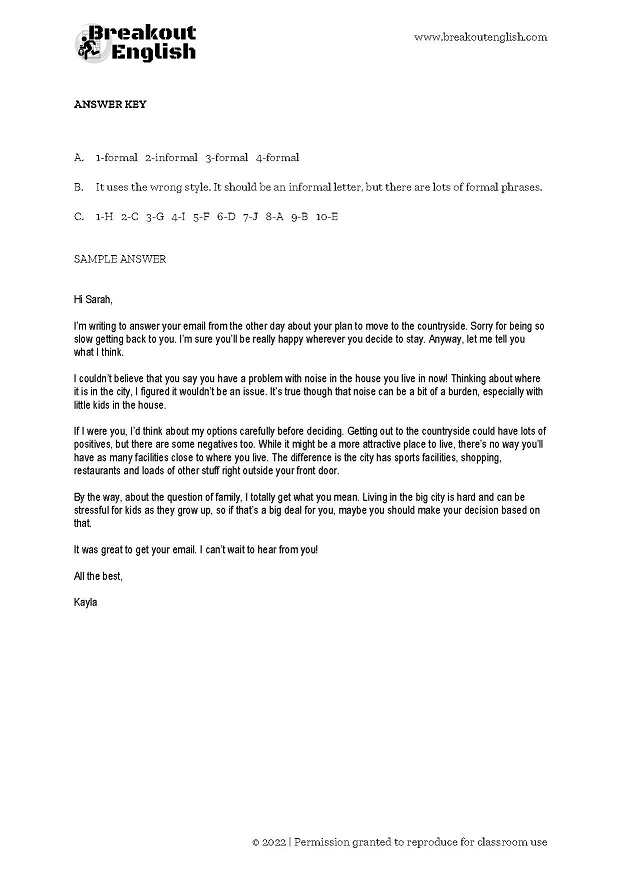Letters and emails are probably the most practical writing type in the exam. Personally, I write emails almost every day. Letters, not so much. I’m not quite sure if I’ve ever hand-written and posted a letter to be honest. However, emails to clients or job application cover letters are definitely things which I’ve written at some point in my life. When was the last time you wrote a letter or email? Why did you write it? How long was it?
This post and the free downloadable materials below are adapted from Breakout English’s bestselling book, Advanced Writing Plus, which is available as a digital download or paperback.
CAMBRIDGE C1 ADVANCED WRITING PLUS

Contents
Types of letters
You have to be careful with letters and emails. A lot of people think that just because it’s a familiar writing type, it’s easy. I know countless exam candidates who chose the letter because they thought it was the easy choice. They then produce a writing that is too simple, not in the correct style, or doesn’t answer the question properly. I’m not saying you shouldn’t choose a letter as your writing, I’m just saying that you shouldn’t assume it’s the easy choice. The biggest factor in letter writing for exams is formality. Depending on your target reader, you may have to write an informal letter, something semi-formal, or something very formal. These styles have some reasonably strict rules, which we’ll take a closer look at later.
Look at this list of letters. Which ones do you think are likely to come up in an English exam? Why? Which ones are formal letters or informal letters? Can you put them on a scale of most to least formal?
- A letter to a friend who is visiting you in your country
- An email to your parents asking for something
- A letter to complain about a product or service
- An email to a client from a company you work for
- A thank you letter to your wedding guests
- A letter to the editor of a magazine
- A letter to your local city council
- A letter to the president of your country
- An email to a colleague
- A job application letter
Likely – 1, 3, 4, 6, 7, 9, 10 Unlikely – 2, 5, 8
As you can see, there are lots of different reasons for writing a letter. Depending on the exam you are doing, some of these are more likely than others. In IELTS General Training exams, Writing Part 1 can be an informal, semi-formal or formal letter. In Cambridge exams, you’d expect to see informal letters at B1 Preliminary level, but the higher the level, the more formal the writing tasks will be. By C1 Advanced level, you’d be expected to be able to write complex formal letters of complaint or for professional purposes. Trinity ISE exams would follow the same logic. I’m not sure any exam would ever ask you write a letter to the President though!
Informal letters vs formal letters
Imagine you’re lying on a tropical beach and missing your family. Or perhaps you are a soldier at war writing home to your partner. These are real reasons why people write long, elaborate letters, aren’t they? At least that’s what Hollywood has taught me. So what style would you use when writing to your friend from a tropical beach? It would probably be pretty informal.
What about some of the other writing options? Letters written for professional purposes, to a city council, or to the editor of a newspaper should all be fairly formal. Additionally, for the purposes of an exam like Cambridge, Trinity or IELTS, you will almost always be writing to someone who you don’t know, meaning you have to step up the formality a little bit more.
Take a closer look at formal vs informal writing and the elements that determine the style you choose with the free writing pdf below or pick up a copy of Advanced Writing Plus.
Characteristics of informal and formal writing
As with most things in English, nothing is 100% when it comes to choosing a writing style, but there are a few guidelines which can help you to make sure you are writing well. You can use these guidelines to check your writing and self-correct. These are the types of things that an examiner would pick up on and which could affect the points you get in different marking criteria. For example, in Cambridge exams, there is a criteria called Communicative Achievement in which you have to use “the conventions of the communicative task effectively” (Cambridge Advanced C1 Handbook). This basically means you have to write the correct type of writing according to the question with the correct style for that writing. While formality isn’t the only factor in style, it’s definitely an important one!
| FORMAL VS INFORMAL WRITING | Formal | Informal |
| Purpose | Professional | Personal |
| Contractions | Never | Always |
| Phrasal Verbs | Rarely | Frequently |
| Exclamation marks | Never | Permitted |
| Vocabulary | Less common words | High frequency words |
| Expressions | Fixed and formal | Conversational |
| Tone | Impersonal | Friendly |
| Linking | Formal linking words | Simple linking words, linking expressions |
The materials
With these materials you can prepare for different types of writing. You’ll be asked to evaluate a sample writing which has some mistakes with style. Then, after learning some useful phrases for writing, you’ll have a chance to fix the letter and compare to the correct informal writing sample in the answer key.
Use these materials in class to train students for the Writing part of any B2 or C1 level exam such as a letter CAE example (or IELTS). Or you can use it at home as a self-study worksheet.
Download





